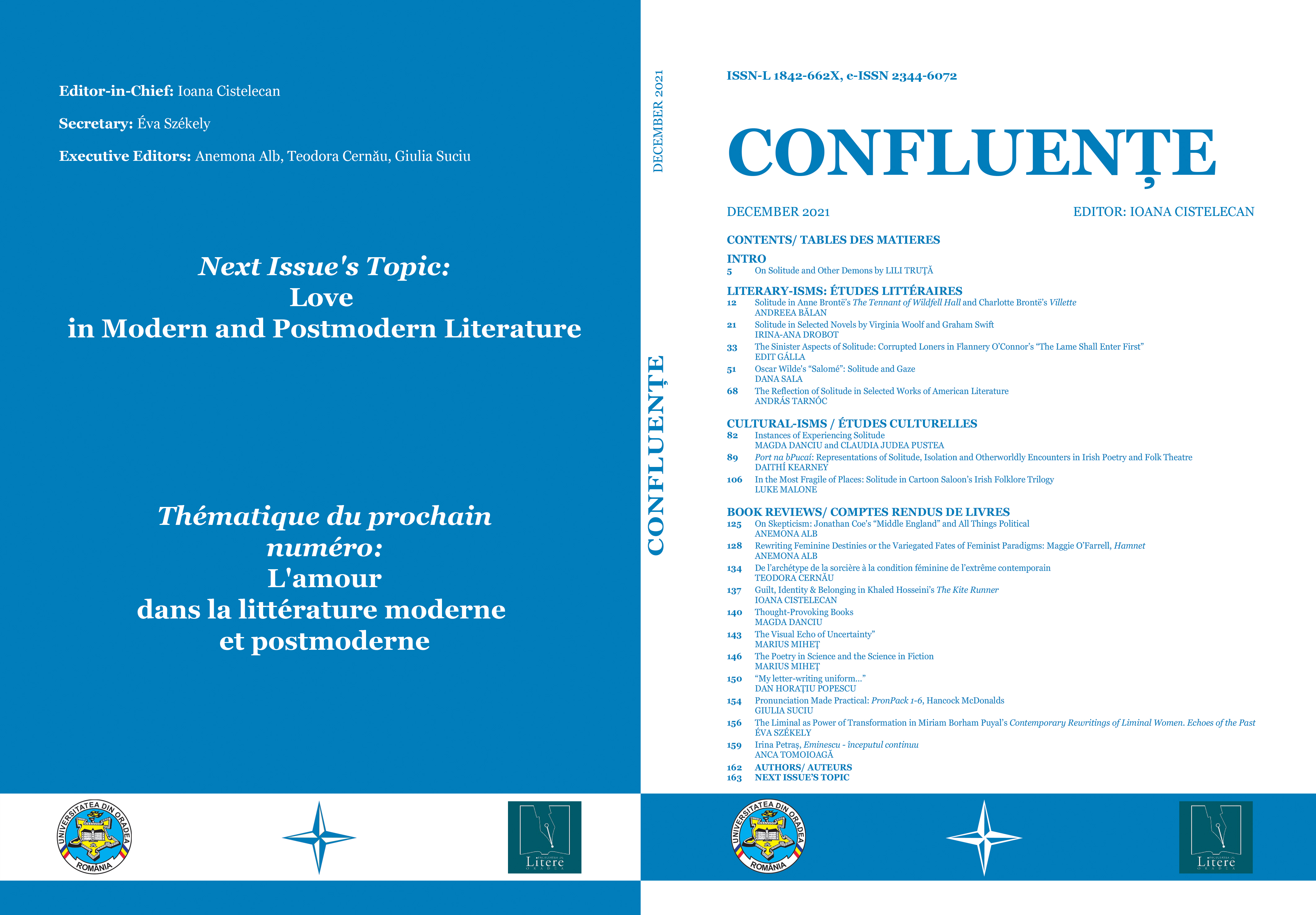Oscar Wilde's “Salomé”: Solitude and Gaze
Oscar Wilde's “Salomé”: Solitude and Gaze
Author(s): Dana SalaSubject(s): Language and Literature Studies, Theory of Literature
Published by: Editura Universitatii din Oradea
Keywords: gaze; ancient myths; Wilde; beauty; ideal; decadence; mask; narcissism; Salomé; solitude; desire;
Summary/Abstract: Oscar Wilde's “Salome” was created from the very beginning with an emphasis on the relationship text-image. The images were produced by Audrey Beardsley. He placed Salome in Victorian settings. Therefore the frame of antiquity is present in the text, but it is very pale. The most complicated relationship of the play is between Herodias and her daughter. Mother-daughter relationship brings the necessary tension to counterbalance this impossibility. Is Salomé just like Dorian Gray in the moment of wanting to grant immortality to himself, offering in turn only the intensity of his desire? In a way, yes. Art can grant immortality because art means that the artist had already paid a price. Desire alone cannot bring the transubstantiation of beauty into immortality. This seems to be the conflict in Wilde's play Salomé.
Journal: Confluenţe. Texts and Contexts Reloaded
- Issue Year: I/2021
- Issue No: 1
- Page Range: 51-67
- Page Count: 17
- Language: English

